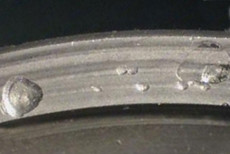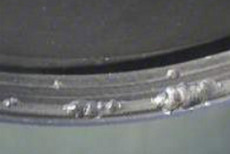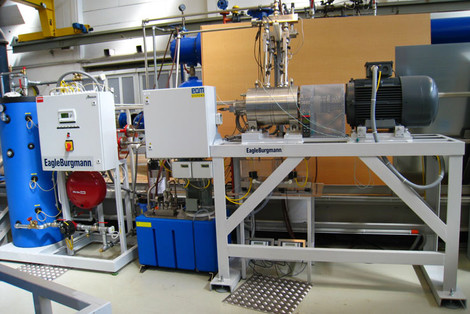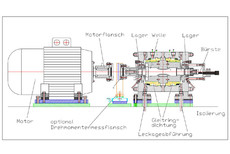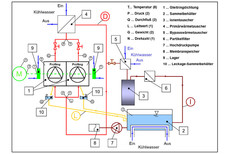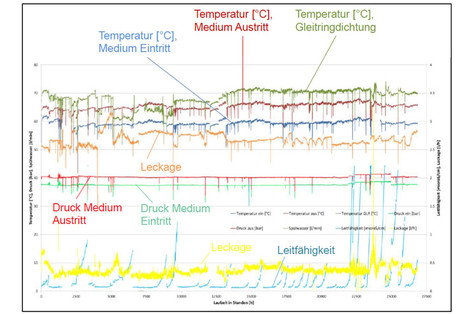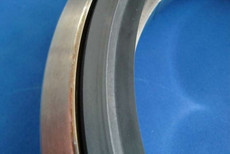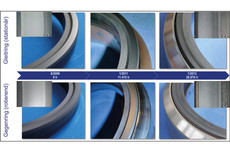Diamond-coated mechanical seal: "27.000 h" long term test
Since the corrosion inhibitor hydrazine has been forbidden as of the health risks connected to it, mechanical seals of boiler feed water pumps show signs of electrical corrosion unknown before. The relative movement between the sliding ring and the stationary ring provokes static charging which – in contrast to the past – are no longer diverted as of the very low conductivity of the boiler water below one micro-Siemens per cm [μS/cm].
Within short periods of operation – in some cases only a few hundred operational hours – pieces having the size of finger tips break off from the sliding and/or the stationary ring and cause rapid increases in leakage current. Diamond-coated mechanical seals can help to avoid this problem.
A test rig for long-term tests including control units has been developed, designed and manufactured by and in the Institute’s own workshop and then operated with an exact replica of the clients mechanical seal surrounding area at original operating conditions. Fully desalinated water with a maximum conductivity of 0.1μS/cm is permanently treated by means of an ion exchanger. The test rig is operated non-stop, whereas there are three cycles: the pressure-operated media cycle, the ionisation cycle and the leakage cycle.
The above illustration of the test rig shows: left – the cooling device, in the middle– the water treatment unit (blue), above this unit – the data logger control cabinet, right – the test sample with drive motor, beneath – the leakage measurement. The control units for the continuous operation and surveillance as well as the recording of the test data are not depicted.
The already mentioned conductivity of 0.1µS/cm is around factor 10 lower than the specification and the plant conditions. Thus, the conditions created are even stricter than in reality.
First of all, the state one aims to avoid, was simulated with two conventional silicium carbide seals. After only a short period of time (660 h) these conventional mechanical seals exhibited the damages expected, which provided the evidence that the real operating circumstances have been exactly copied.
As an example, the test data for the mechanical seal of the driving end are depicted as long-term script in the figure beneath. The bottom line represents the conductivity, and it can be seen that over long periods of time – several thousand operating hours – it lies beneath the threshold of 0.1 μS/cm. As soon as a conductivity value of 1 μS/cm is reached, the ion exchanger unit is regenerated. The pressure load (pressure IN, OUT) is held constant during the total duration of the test.
In the beginning, the test carrier was opened every three months for an exchange of the test rig’s ball bearings. Later on, these intervals were extended. The figure showing the stationary ring after 26.680 operation hours shows the still excellent state of the mechanical seal after such a long period of permanent operation. The state of the sealing can be characterised as good as new, and there is no reason at all for an exchange. The long-term test will be continued.




